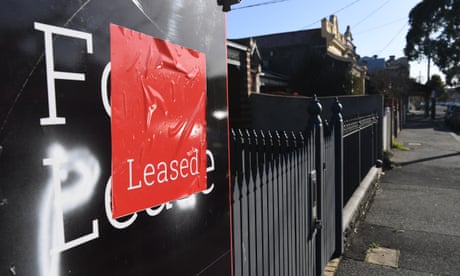- by foxnews
- 11 Mar 2025
Australia’s renters face ‘staggering’ increases - with more to come
Australia’s renters face ‘staggering’ increases - with more to come
- by theguardian
- 27 Feb 2023
- in news

Australia's renters are facing "staggering" increases in weekly costs, with worsening shortages of homes pushing up rents by a third or more in the past year in the most stretched markets.
Data from PropTrack found most of the biggest increases were in the regions, with Katanning, a town several hours' drive south-east of Perth, registering the biggest annual increase in weekly house rents at 47% to a median price of $375.
Melbourne's CBD led increases in units, with residents reporting a 42% rise in rents over the past year to a median price of $540.
"These are really staggering rent increases," PropTrack economist Anne Flaherty said, adding the rental jump was broad-based. "The speed at which rents are rising is far outpacing what we historically see."
Rising demand was one factor, as Covid-related work changes meant more relatively well-paid city residents found they could work remotely, and outbid locals.
Lately, the return of overseas students and a resumption of migration have combined to push up competition for inner-city units in particular, Flaherty said.
"We lost those at the start of the pandemic and we saw vacancy in Melbourne CBD and Sydney CBD increase, and rents fell," she said. "Now we're in exactly the reverse situation where demand is back very strongly and that's driven a recovery in rents."
Other groups have estimated average rental increases exceeded 10% in 2022 even as rising interest rates triggered a drop of property prices. ANZ last week projected property prices in capital cities would slide another 10% in 2023, bringing the total peak-to-trough retreat to 18% before they start to make a modest rebound in late 2024.
Flaherty said higher borrowing costs themselves were not necessarily driving rents higher.
"Landlords basically can charge what the market can afford," she said. Without the current "rental crisis", landlords couldn't push rents above the market prices just to claw back the higher borrowing costs.
One effect of higher interest rate costs, though, was that average would-be homebuyers have had their borrowing capacity slashed by about a quarter even as real estate prices have dropped. "There's a cohort of renters out there who had been delayed from buying because it's less affordable," Flaherty said.
The outlook for supply isn't promising either. The Housing Industry Association last week warned the combination of skills and material shortages and higher costs would push the rate of construction of new homes to the lowest year rate in a decade.
The HIA expects the number of detached housing starts to "fall below 100,000 starts per year for the first time in a decade to just 96,300 in 2024", it said. "This is a very rapid slowdown from the 149,000 starts in 2021."
The slowing rate of new homes being built just as demand picks up point to more rental increases to come as the market remains tight. Nationally, vacancy rates are below 2% and in some regions even below 1%.
"Renters are realising that if they want to be successful, in some cases, they need to offer more than what the landlord's even asking," Flaherty said. "We're certainly expecting to see rents climb higher this year."
- by foxnews
- descember 09, 2016
High-end vacation resort bans children to achieve 'tranquil environment'
The Alila Marea Beach Resort, located in Encinitas, California, has announced that it's no longer accepting kids and is transitioning to an adults-only vacation spot.
read more


